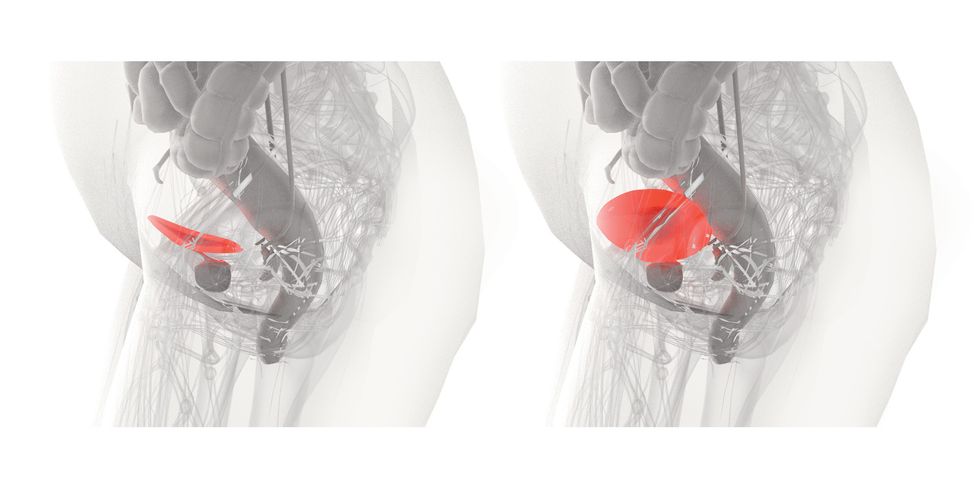From the May/June issue of Car and Driver.
Like a Hollywood director looking to cast a leading role, EV buyers want something with range. And often, they want lots of it. But how much range is more than enough? The 70 miles we got from the now-discontinued Mazda MX-30 on our highway range test may fall far short of customer needs, but is the 410-mile figure we measured from a Lucid Air Grand Touring overkill? That’s the equivalent of five and a half hours of highway driving, or about as long as—if not longer than—many well-hydrated drivers (or not-so-well-hydrated drivers of a certain age) can go between pit stops. It also far surpasses the three- to four-hour window between bathroom breaks that Dr. Giulia Lane, assistant professor of urology at the University of Michigan, recommends.
There’s little harm in occasionally holding it in longer, but there are long-term risks if you regularly push your bladder’s limits. The bladder is a muscle, and continually overstretching it may lead to decreased sensation—that feeling you get when you have to go—and increased difficulty when it comes time to relieve yourself.
- A well-hydrated average healthy adult produces approximately 60 to 100 milliliters of urine per hour—or a soda can’s worth of urine every three and a half to six hours—that the body stores in the bladder, which can hold around 400 milliliters of liquid. Once the bladder is about half full, it triggers a feeling Dr. Lane calls “first desire.”
- Next is “strong desire,” which occurs when the bladder is around 75 to 90 percent full. Unless you have the willpower of the King’s Guard, “you’re going to pull over at the next station, and you’re going to be parking quickly and running,” says Lane. Those with the bladder of a racehorse may manage up to a little over five hours of driving before reaching this point. Most healthy adults will last four hours, while others may barely make it three.
- Your bladder still has around 50 to 100 milliliters of room left in it, though, and if you decide to push on, you may make it another hour or so before reaching full capacity, which, in nonmedical terms, is “essentially pulling over on the side of the highway and peeing on the side of the road,” Lane says. “The more likely outcome is that you’re going to wet yourself.” Your bladder shrinks from about the size of a grapefruit to roughly that of a lemon. Your car’s interior, meanwhile, goes from smelling innocuous to reeking like a college-campus port-a-potty on game day.


